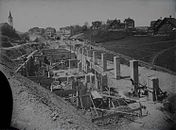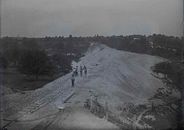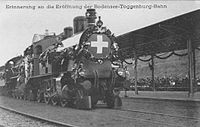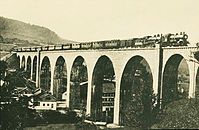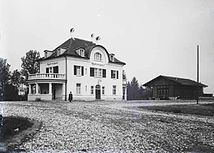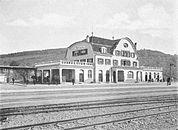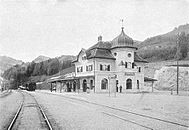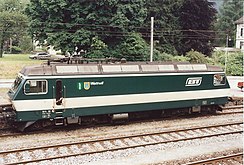Bodensee-Toggenburg Railway
| Bodensee-Toggenburg Railway | |||||||||||||||||||||||||||||||||||||||||||||||||||||||||||||||||||||||||||||||||||||||||||||||||||||||||||||||||||||||||||||||||||||||||||||||||||||||||||||||||||||||||||||||||||||||||||||||||||||||||||||||||||||||||||||||||||||||||||||||||||||||||||||||||||||||||||||||||||||||||||||||||
|---|---|---|---|---|---|---|---|---|---|---|---|---|---|---|---|---|---|---|---|---|---|---|---|---|---|---|---|---|---|---|---|---|---|---|---|---|---|---|---|---|---|---|---|---|---|---|---|---|---|---|---|---|---|---|---|---|---|---|---|---|---|---|---|---|---|---|---|---|---|---|---|---|---|---|---|---|---|---|---|---|---|---|---|---|---|---|---|---|---|---|---|---|---|---|---|---|---|---|---|---|---|---|---|---|---|---|---|---|---|---|---|---|---|---|---|---|---|---|---|---|---|---|---|---|---|---|---|---|---|---|---|---|---|---|---|---|---|---|---|---|---|---|---|---|---|---|---|---|---|---|---|---|---|---|---|---|---|---|---|---|---|---|---|---|---|---|---|---|---|---|---|---|---|---|---|---|---|---|---|---|---|---|---|---|---|---|---|---|---|---|---|---|---|---|---|---|---|---|---|---|---|---|---|---|---|---|---|---|---|---|---|---|---|---|---|---|---|---|---|---|---|---|---|---|---|---|---|---|---|---|---|---|---|---|---|---|---|---|---|---|---|---|---|---|---|---|---|---|---|---|---|---|---|---|---|---|---|---|---|---|---|---|---|---|---|---|---|---|---|---|---|---|---|---|---|---|---|---|---|---|---|---|---|---|---|---|---|---|---|
|
blue: lines owned by the Schweizerische Südostbahn (SOB)
gray: lines operated by the Swiss Federal Railways (SBB) | |||||||||||||||||||||||||||||||||||||||||||||||||||||||||||||||||||||||||||||||||||||||||||||||||||||||||||||||||||||||||||||||||||||||||||||||||||||||||||||||||||||||||||||||||||||||||||||||||||||||||||||||||||||||||||||||||||||||||||||||||||||||||||||||||||||||||||||||||||||||||||||||||
| Timetable field : | 870, 853 | ||||||||||||||||||||||||||||||||||||||||||||||||||||||||||||||||||||||||||||||||||||||||||||||||||||||||||||||||||||||||||||||||||||||||||||||||||||||||||||||||||||||||||||||||||||||||||||||||||||||||||||||||||||||||||||||||||||||||||||||||||||||||||||||||||||||||||||||||||||||||||||||||
| Route length: | 58.72 km | ||||||||||||||||||||||||||||||||||||||||||||||||||||||||||||||||||||||||||||||||||||||||||||||||||||||||||||||||||||||||||||||||||||||||||||||||||||||||||||||||||||||||||||||||||||||||||||||||||||||||||||||||||||||||||||||||||||||||||||||||||||||||||||||||||||||||||||||||||||||||||||||||
| Gauge : | 1435 mm ( standard gauge ) | ||||||||||||||||||||||||||||||||||||||||||||||||||||||||||||||||||||||||||||||||||||||||||||||||||||||||||||||||||||||||||||||||||||||||||||||||||||||||||||||||||||||||||||||||||||||||||||||||||||||||||||||||||||||||||||||||||||||||||||||||||||||||||||||||||||||||||||||||||||||||||||||||
| Power system : | 15 kV 16.7 Hz ~ | ||||||||||||||||||||||||||||||||||||||||||||||||||||||||||||||||||||||||||||||||||||||||||||||||||||||||||||||||||||||||||||||||||||||||||||||||||||||||||||||||||||||||||||||||||||||||||||||||||||||||||||||||||||||||||||||||||||||||||||||||||||||||||||||||||||||||||||||||||||||||||||||||
| Maximum slope : | Romanshorn – St. Gallen: 19 ‰ St. Gallen – Wattwil: 18 ‰ Wattwil – Nesslau-Neu St. Johann: 24 ‰ |
||||||||||||||||||||||||||||||||||||||||||||||||||||||||||||||||||||||||||||||||||||||||||||||||||||||||||||||||||||||||||||||||||||||||||||||||||||||||||||||||||||||||||||||||||||||||||||||||||||||||||||||||||||||||||||||||||||||||||||||||||||||||||||||||||||||||||||||||||||||||||||||||
| Minimum radius : | 200 m | ||||||||||||||||||||||||||||||||||||||||||||||||||||||||||||||||||||||||||||||||||||||||||||||||||||||||||||||||||||||||||||||||||||||||||||||||||||||||||||||||||||||||||||||||||||||||||||||||||||||||||||||||||||||||||||||||||||||||||||||||||||||||||||||||||||||||||||||||||||||||||||||||
|
|||||||||||||||||||||||||||||||||||||||||||||||||||||||||||||||||||||||||||||||||||||||||||||||||||||||||||||||||||||||||||||||||||||||||||||||||||||||||||||||||||||||||||||||||||||||||||||||||||||||||||||||||||||||||||||||||||||||||||||||||||||||||||||||||||||||||||||||||||||||||||||||||
The Bodensee-Toggenburg-Bahn ( BT ) is a former railway company in Eastern Switzerland . It existed from 1910 until the merger with the “old” Südostbahn (SOB) to form the “new” Swiss Southeast Railway (SOB) on January 1, 2001. Today, the line, together with the Wattwil – Ebnat-Kappel section, forms the eastern network of the Südostbahn.
The BT owned the standard-gauge adhesion lines from Romanshorn to St. Gallen St. Fiden (19.13 km) and from St. Gallen to Wattwil (31.74 km), which opened on October 3, 1910 , as well as those opened on October 1, 1912 Route from Ebnat-Kappel to Nesslau-Neu St. Johann (7.85 km).
The lines in between from St. Gallen St. Fiden to St. Gallen HB and from Wattwil to Ebnat-Kappel belonged to the Swiss Federal Railways (SBB), with the Wattwil – Ebnat-Kappel line being leased by BT.
history
The urge to Lake Zurich

The first rail connections in eastern Switzerland followed the river valleys and thus resulted in some major detours for trips to the canton capital of St. Gallen in the east . After the construction of the Appenzeller Bahn (AB) by the Swiss Society for Local Railways had shown that it is possible to develop narrow-gauge railways in the hilly terrain of the foothills of the Alps at relatively low cost, a large number of projects arose in the foothills of the Alps to be developed between Lake Constance and Lake Zurich . Some of the projects provided for routes following the Appenzeller Bahn, other projects were developed independently of the AB. However, the narrow-lane overshooting of Ricken and Wasserfluh would have led to a winding, slow connection. It was therefore required to secure the important inner-cantonal connection between Rapperswil and St. Gallen with a standard-gauge railway . In particular, “ennet dem Ricken” built up political pressure in favor of the project.
On May 17, 1887 , at the request of the government, the Great Council of St.Gallen decided to grant a loan of 7,000 francs for preparatory work for a railway connection from the Linth region via Toggenburg to the canton capital. The first expert opinion recommended closing the gap between Ebnat and Uznach , which would still have required the detour via Wil for the trip to St. Gallen . Based on the “Thursday Society ” in Degersheim, an initiative committee was formed in 1889 for a railway connection St. Gallen-Herisau- Degersheim - Neckerthal -Wattwil-Rapperwil . The leading man was the Degersheim embroidery manufacturer Isidor Grauer-Frey , who also campaigned for a continuation beyond Rapperswil to Zug in order to realize a connection to the Gotthard Railway . The Lake Zurich – Gotthard Railway - the later Swiss Southeast Railway (SOB) - planned with a maximum gradient of 50 ‰ - seemed to him unsuitable for the traffic volume of a main line. In 1889 the Grand Council granted the initiative committee a contribution of 5,000 francs to submit a St. Gallen – Zug license application. This license was granted by the Federal Assembly on June 27, 1890.
There were still 15 years of disputes about the route ahead, with Grauer-Frey always vehemently defending himself against local requests to extend the route for the purpose of better local access. It could not fully assert itself, but it was nevertheless possible to plan a relatively direct connection between St. Gallen and Rapperswil, the route of which corresponded to a main line. In addition, the plan not to exceed a maximum gradient of 18 per thousand could be adhered to. This became possible after it was possible to prevent overshooting of the rick and instead provide a base tunnel under the rick.
There were serious problems with the financing. After lengthy negotiations, the federal government agreed - after the decision had been made in 1898 to buy back the large private railways and nationalize them - to build the Rickenbahn through the federal railways that were to be founded , if the canton of St. Gallen would buy back the Toggenburgerbahn Wil-Ebnat and they would SBB hand over. Corresponding contracts were concluded in 1901 with the United Swiss Railways (VSB), which will soon be nationalized . The Federal Assembly approved this trade on December 19, 1901 and transferred the Wattwil – Rapperswil concession to the VSB on December 20, 1901.
The continuation of Rapperswil – Zug remained an unfulfilled dream of Grauer-Frey and the license expired after the Federal Assembly on December 22, 1906 rejected a further extension of the deadline. Almost 90 years later, this dream was to be boosted again for a short time with the NEAT follow-up project “ Hirzeltunnel ”. In contrast, the St. Gallen – Romanshorn and Ebnat – Nesslau Neu St. Johann projects, which were promoted by other initiators and described below, were combined into one concession with the St. Gallen – Wattwil line (federal decrees of December 19, 1902 and April 11, 1907).
St. Gallen – Romanshorn and the extension to Obertoggenburg
In 1889 the project of a narrow-gauge streetcar St. Gallen - Wittenbach - Kügelis winds - Neukirch - Amriswil was presented. Arbon tried to build a narrow-gauge railway via Roggwil to St. Gallen. The St. Gallen town council , however, wanted a standard gauge railway to the ferry port Romanshorn. At that time, Romanshorn was an important hub in freight traffic between Switzerland and Germany. The Basel Rhine ports did not start operating until 1922. Coal, iron and other goods came from Romanshorn to St. Gallen via Rorschach .
The lines were fiercely disputed. The original project envisaged a 980 meter long tunnel through the Rosenberg from the St. Gallen train station . The route should then lead along the Sitter to the village of Wittenbach . It was then decided to use the SBB line from St. Gallen to St. Find, and the SBB built the double-lane Rosenberg tunnel in place of the single-lane open route through the city from 1856. With the exception of the Bruggwald tunnel, no large engineering structures were required . On April 15, 1898, the Federal Assembly granted the license.
When the Bodensee – Toggenburg Railway project was publicly known, every village in the st. Gallic - Thurgau border area to ensure the best possible access to the railway line. A community station Muolen - Steinebrunn was not approved by the population and had to be abandoned. The original project envisaged the confluence with the lake line at the Egnach station . Despite the station on the lake line, Egnach also wanted its own connection to the BT. Ultimately, Neukirch and Egnach were able to agree on a common train station with the corresponding double name.
The branch line from Wil to Ebnat of the Toggenburgerbahn was put into operation as early as 1870. In 1890 the St. Gallen government council had the project of a continuation from Ebnat to Nesslau worked out. On June 17, 1898, the Federal Assembly granted the license. With an amendment to the statutes on February 6, 1909, the Ebnat-Kappel – Nesslau-Neu St. Johann line became part of the Lake Constance-Toggenburg Railway. Shortly before construction began, counter-projects for narrow-gauge trams emerged. In 1907 the plans for a railway from Ebnat to Unterwasser were presented, in 1908 from Wattwil to Buchs . Because the BT already had the concession to Nesslau, the Federal Assembly granted the narrow-gauge railway concession only from Nesslau to Buchs on June 24, 1910.
The construction
On November 17, 1903, the still young Swiss Federal Railways (SBB) began building the Rickentunnel between Wattwil and Kaltbrunn . The breakthrough took place on March 30, 1908, after delays caused by the appearance of mine gas.
On December 27, 1905, the first preparatory work for the construction of the Wasserfluhtunnel began in Lichtensteig and the construction of the BT began. The first work on the 99 meter high Sitter Viaduct , however, did not take place until the summer of 1908. The construction workers who came from Italy and Croatia were often unable to speak German, and tensions arose between the population and the workers.
The BT had to struggle with countless difficulties during its construction, so that the opening planned for spring 1910 had to be postponed for six months. BT had big disputes with the Appenzeller Bahn (AB), whose line to St. Gallen Winkeln faced competition from BT. Their station near the village of Herisau had to be relocated at the expense of BT. At the St. Gallen train station , the SBB refused to use platform 1 for BT, which made it necessary to build a bridge over the SBB line from Bruggen .
On June 22, 1909, part of the Bruggwald Tunnel , which was under construction, collapsed , causing seven deaths and one strike . The company commissioned with the construction of the water flow tunnel was hit by two work stoppages and financial difficulties. The BT withdrew the contract and built the tunnel, which killed seven people, on its own . Heavy and persistent rains resulted in dozens of landslides, the repair of which was laborious and costly. The Hohenbühldamm near Roggwil-Berg, which slipped to the side, was only passable a few weeks before the route opened.
See also: Sections "Construction" in the articles Wasserfluhtunnel , Sitterviadukt (Südostbahn) and Bruggwaldtunnel
opening
On October 1, 1910, the Romanshorn – St. Gallen St. Fiden and St. Gallen – Wattwil will be officially opened together with the Rickenbahn Wattwil – Uznach. The opening train was made up of rolling stock from BT and SBB. Scheduled traffic started on October 3, 1910.
Opening train of the BT and Rickenbahn in Herisau on October 1, 1910. At the top a BT Eb 3/5 , behind it an SBB A 3/5 603–616.
BT opening train with its own and SBB passenger cars on the Glatt valley viaduct near Herisau
The Ebnat-Kappel – Nesslau line, designed as an extension of the Toggenburgerbahn, was only opened on September 30, 1912. On October 1, 1912, operations began on the 7.6-kilometer route. It overcomes a difference in altitude of 119 meters. It was necessary to build three tunnels and several bridges.
Station building
When the BT was built, the reception buildings were not created as standardized types, but rather, as with the Rhaetian Railway, attempts were made to adapt to the construction forms common in the area. The station building of the BT and the community train station in Lichtensteig were built according to sketches by the St. Gallen architect Salomon Schlatter.
The station buildings in Wittenbach , Häggenschwil , Muolen and Steinebrunn are based on the Thurgau half-timbered house . The buildings in Wittenbach and Steinebrunn are characterized by a mansard roof and coupled windows, while those in Häggenschwil and Muolen have regularly spaced windows with shutters . Mogelsberg and Brunnadern received a stand construction based on the Toggenburgerhaus , and Schachen in the canton of Appenzell received a shingle umbrella typical of that area .
The railway stations Roggwil - Berg and Neukirch-Egnach show similarities with the country houses that rich St. Gallen and Constance citizens built in the 18th century. The larger stations in Haggen, Herisau and Degersheim are related to the factory owners' houses in the area .
Schachen in the canton of Appenzell AR
Brunnadern with freight train, post coach on the left to St. Peterzell
Lichtensteig wedge station ; left track of BT, right (covered) of SBB
Station building Nesslau-Neu St.Johann after completion
Operation by the SBB
BT had procured its own rolling stock, but signed an operating contract with SBB because it was hoped that this would result in financial savings. A review in 1915, however, showed lower costs for own operation. The negotiations started with the SBB soon led to an agreement, whereby the SBB proposed to keep the continuous operation Romanshorn-Rapperswil and Wil-Nesslau and to use material and personnel of the two railways in kind of compensation. On May 1, 1917, BT went into its own operation. For this purpose, the necessary systems for vehicle maintenance were built in Herisau.
Extension into the Rhine Valley
The opening of the postal bus line from Nesslau to Wildhaus on May 1, 1918 led to a significant increase in traffic on the railway line to Nesslau.
As soon as the First World War was over, the project of the Toggenburg- Werdenberg -Bahn (TWB) emerged, an electric meter- gauge railway Nesslau-Wildhaus-Buchs. With a gradient of 65 per thousand and a curve radius of 60 to 70 meters, the alignment on the west side would not have caused any great difficulties. The apex was planned in Wildhaus , exactly in the middle of the 32-kilometer route. The journey on the east ramp from Wildhaus via Gamserberg to Gams would have been through a spiral tunnel . The Gams – Buchs line was intended as a tram. The costs were estimated at an impressive 9.5 million francs.
In 1944 the BT submitted a request for a 15.1 kilometer extension of its route to Wildhaus. The maximum gradient would have been 50 per thousand. In addition to four tunnels, stations were planned in Stein , Alt St. Johann , Unterwasser and Wildhaus. The project intended as a job creation measure was not implemented because there was no unemployment after the war .
Thermal operation
In 1926 two BCFm 2/4 petrol railcars were delivered to BT, which allowed the operating costs of some suburban trains to be reduced and additional trains to be operated. Since the concept of "light operation" proved its worth, not only locomotives but also railcars were procured for electrification. The two petrol railcars were demotorized and served as railcar trailers in the future. The fact that they were not kept as a catenary-independent reserve, such as the diesel multiple units of the Appenzeller Bahn, indicates that the drive was not fully satisfactory.
electrification
Electrification was already an issue during construction, but the SBB turned against it. From a technical point of view, there was still a lot of uncertainty at the time and no cost savings were seen compared to steam operation. The First World War, with rising coal prices, quickly changed this view. On October 18, 1920, the BT board of directors decided to electrify the St. Gallen – Wattwil – Nesslau line, but suspended this decision a year later after coal prices had quickly normalized again.
On October 4, 1926, there was a railway accident in the Rickentunnel (carbon monoxide poisoning of the train crew of a stuck freight train), which prompted the SBB to electrify the tunnel immediately.
As a result, continuous steam operation to Rapperswil was no longer possible from May 15, 1927, whereupon the BT Board of Directors decided on April 12, 1930 to fully electrify the BT lines. The federal government and cantons (with the involvement of the municipalities) granted BT an electrification loan of CHF 3.9 million. In order for continuous electrification to be possible, BT had to lease the Wattwil – Ebnat-Kappel line from the SBB, as the SBB had no plans to electrify the Toggenburgerbahn in the foreseeable future - the latter was only to take place during the Second World War.
From October 4, 1931, the St. Gallen – Nesslau line and from January 24, 1932 the Romanshorn – St. Gallen can be driven electrically.
Cooperation with the SOB
With the start of electrical operation on the Südostbahn (SOB) in 1939, new opportunities for cooperation opened up. In 1940 direct trains from St. Gallen to Arth-Goldau were introduced, some of which were extended to Lucerne from 1945 on Sundays and from 1947 onwards daily . This gave birth to the direct route between Northeast Switzerland and Central Switzerland, which is now marketed as the Voralpenexpress .
When electrical operations began, the SOB locomotives had not yet been delivered, so BT and SBB initially helped out together with locomotives and railcars.
As early as 1955, the idea of merging the train transport service and the workshops came up for the first time. The project failed, however, and the close cooperation in the offer of continuous trains found no equivalent in other areas.
Development into a modern private railway


Apart from electrification, the state of BT changed little over the first forty years. The generous lines in the foothills of the Alps led to a burden of debt , the interest on which was an enormous burden. In the 1930s, the financial situation deteriorated so much that in 1942/43 a partial renovation was necessary at the expense of the federal government and the cantons of St. Gallen and Thurgau. It was not until the new Federal Railways Act , which came into force in 1958, that the way was clear for a comprehensive renewal of the infrastructure and vehicle fleet.
Between 1954 and 1956, BT equipped its lines with line blocks. To do this, she used the in-house development “Teleblock”, which was cheaper than the usual systems thanks to the use of telephone relays. To mark its fiftieth anniversary, BT was able to put a shuttle train into operation with the BDe 4/4 No. 50 multiple unit. This train was equipped with tube lighting , rubber bulge junctions and built-in train end signal . The two suburban commuter trains BDe 2/4 + ABt, which went into operation in 1961 and 1965, were built in the company's own workshop .
With an initial investment program, the vehicle fleet was expanded from 1966 to 1968 with three additional BDe 4/4 commuter trains and twelve I standard cars , and the mechanical interlockings were replaced by relay interlockings . A second involved expanding the entire infrastructure. The focus from 1973–1982 was on expanding the Wittenbach – St.Gallen – Herisau – Degersheim section to create a modern suburban line with customer-friendly train stations. In a third step, six three-part phase control commuter trains RBDe 4/4 + B + ABt were procured in 1982 , which were used in regional traffic. The fourth investment program enabled the acquisition of six Re 4/4 locomotives in 1987/88 . It was the world's first converter line locomotives with three-phase asynchronous motors and thyristors that can be switched off . 1989 was the Gübsensee the first double track to be opened in sections, of the half hour allowed between St. Gallen and Wattwil.
See also: section rolling stock
The "end" of the BT
Under new management and in a changed railway political environment, talks were resumed in the 1990s about a closer cooperation between BT and SOB, which with the retroactive merger on January 1, 2001 to form the new Swiss Southeast Railway based in St. Gallen ended.
With the exception of the Bern-Lötschberg-Simplon-Bahn (BLS), the BT had the largest number of engineering structures per kilometer of property length of all Swiss railways. The large number of tunnels and bridges led to high construction and maintenance costs.
Buildings
Tunnels
The BT routes comprised 17 tunnels with a total length of 6.927 km, of which the Bruggwald and Wasserflue tunnels are longer than 1 km. Thus, 12.45% of the property length was underground.
| Surname | Route section | length | comment |
|---|---|---|---|
| Bruggwald | Wittenbach – St. Gallen St. Fiden | 1731 m | |
| Galgentobel | 96 m | ||
| Sturzenegg | St. Gallen Haggen – Herisau | 247 m | |
| Hölzli | 73 m | Canceled in 1988 (expansion of double track) | |
| Heinrichsbad | 27 m | ||
| Thal | 163 m | ||
| Mühlebühl | Herisau-Schachen BT | 90 m | |
| Bühlberg | Schachen BT-Degersheim | 366 m | |
| Aesch | Degersheim – Mogelsberg | 92 m | |
| Neuhaus | Mogelsberg – Brunnadern-Neckertal | 72 m | |
| Russians | 70 m | ||
| Shear | 141 m | ||
| Wasserfluh | Brunnadern-Neckertal-Lichtensteig | 3556 m | |
| Lichtensteig Kantonsstrasse | 39 m | ||
| D'um-D'um | Ebnat-Kappel-Krummenau | 25 m | |
| Horben | 93 m | ||
| Trempel | 46 m |
bridges

The BT routes had 85 bridges over 2 meters in length (16 of which were over 60 meters in length) with a total length of 3.150 km. Bridge sections accounted for 5.66% of the property length. BT also owned the highest railway bridge in Switzerland, the 99 meter high Sitter Viaduct . The brick structure with a 120 meter long half-timbered middle section was also the longest bridge of the BT.
Bridges over 40 m in length:
| Surname | Route section | length | Greatest height |
|---|---|---|---|
| Hegibach | Muolen – Häggenschwil-Winden | 76 m | 14 m |
| Galgentobel | Wittenbach – St. Gallen St. Fiden | 69 m | 11 m |
| Sitter | St. Gallen Haggen – Herisau | 366 m | 99 m |
| Walketobel | 118 m | 35 m | |
| Smooth valley | Herisau-Schachen BT | 296 m | 34 m |
| Ergeten | 96 m | 27 m | |
| Kirchtobel | Schachen BT-Degersheim | 143 m | 29 m |
| Weissenbach | 282 m | 64 m | |
| Waldbach | Degersheim – Mogelsberg | 158 m | 38 m |
| Spitzmühle | 123 m | 36 m | |
| Aesch | 112 m | 43 m | |
| Katzentobel | Mogelsberg – Brunnadern-Neckertal | 109 m | 35 m |
| Josenbach | 101 m | 25 m | |
| Schmidli | 109 m | 14 m | |
| Old street | Brunnadern-Neckertal-Lichtensteig | 55 m | 13 m |
| Thur | 96 m | 18 m | |
| Upper Gieselbach | Ebnat-Kappel-Krummenau | 54 m | 18 m |
| Aeschbach | Krummenau-Nesslau-Neu St. Johann | 41 m | 6 m |
| Thur I | 84 m | 18 m | |
| Thur II | 47 m | 8 m |
business
Operated by the Bodensee-Toggenburg Railway

Because the BT route basically consisted of only sections of the route, the connecting pieces of which belonged to the SBB, personnel and material were always deployed across company boundaries. This was always done with compensation in kind according to kilometers, initially only with the SBB, later when the "Direct Line" started operating in Central Switzerland also with the SOB.
The two-lane Lichtensteig – Wattwil line is a special feature. The western track belonged to the SBB, the eastern one to the BT. Operationally, up to 2006 it was not a conventional double-track, but two adjacent single-track routes. Only after an interlocking and track plan adjustment in 1977/78 could the two tracks be used alternately (from / to Herisau only via track 2), which was mainly used in the event of a delay. It should be noted that only the uphill (western) track was approved for route class D4, the downhill track only allowed route class C3.
The BT had no fewer than seven community train stations.
- Romanshorn (SBB)
- St. Gallen St. Fiden (SBB)
- St. Gallen (SBB, TB , SGA / AB)
- Herisau (AB)
- Lichtensteig (SBB)
- Wattwil (SBB)
- Ebnat-Kappel (SBB, until 1931)
Under the SOB, the property boundaries on the former BT between the SBB and the SOB were cleared in the course of 2006; since then, the SOB has been responsible for the operation of the Lichtensteig – Wattwil – Ebnat-Kappel route. Specifically, the SBB have assigned their shares in these systems to the SOB in exchange for the former BT shares at St. Gallen train station.
Operation by the Südostbahn

The route of the Bodensee-Toggenburg-Bahn is now part of the St. Gallen S-Bahn . The fastest connections are the hourly Voralpen-Express (VAE) of the SOB from St.Gallen via Rapperswil to Lucerne and the RegioExpress from St.Gallen via Romanshorn and Konstanz to Kreuzlingen, which Thurbo operates every two hours. Thurbo opens up the entire route from Nesslau to Romanshorn with the S 8, which runs from Romanshorn to Schaffhausen. Their offer is completed by the circle line S 4 St Gallen Uznach-Sargans-St. Gallen the SOB. The S 81 Herisau – Wittenbach only runs during rush hour.
The Südostbahn would like to shorten the travel time from Wattwil to Nesslau to under half an hour in order to offer a half-hour instead of the hourly service with a multiple unit . To this end, the route will be expanded as far as possible for higher speeds in 2019. The trains are to run at 140 km / h between Wattwil and Ebnat-Kappel. The exit speed from Wattwil station will be increased around 2021 . In 2017, it was planned to shorten the turning point in Nesslau with an automatic S-Bahn train without an engine driver.
In freight transport block trains for tank farm Häggenschwil - winds and freight trains to operate the railway siding customer in St. Gallen Haggen important.
Rolling stock
The BDe 3/4 43 railcar in St. Gallen from the era of electrification .
Suburban commuter train BDe 2/4 41 and 42 with AB 253 in the configuration from 1985 on entering the St. Gallen community train station.
The construction of the Re 4/4 converter locomotives was considered a pioneering act. Re 4/4 96 in Lichtensteig.
| model series | Manufacturer | Construction year | origin | number of pieces | Discarded | Remarks | |||
|---|---|---|---|---|---|---|---|---|---|
| series | Numbers | total | fusion | ||||||
| Steam locomotives | |||||||||
| Eb 3/5 | 1-9 | Maffei | 1910 | 9 | 0 | 1932 | sold to SBB (5881-5889) | ||
| Electric locomotives | |||||||||
| Be 4/4 | 11 | SLM / SAAS | 1931-1932 | 6th | 3 | 2017 | sold to SLM (Schonro) | ||
| 12 | 1998 | sold to Swisstrain, canceled in 2014 | |||||||
| 13 | 1988 | sold to SZU , given to DVZO as a spare parts donor in 1994; then as an exhibit in the Locorama Romanshorn | |||||||
| 14th | 1988 | Sold to private individuals, 2006 to Eurovapor | |||||||
| 15th | 1988 | Sold to DVZO , out of service since 2018 | |||||||
| 16 | 1997 | canceled | |||||||
| Ce 4/4 | 33 | SLM / MFO | 1905/1919 | SBB (1941) | (Ex) 1 | 0 | 1958 | "Eva"; ex MFO 1, ex SBB Fc 2x2 / 2 12101; on VHS submitted | |
|
Fe 4/4 De 4/4 |
50 (1960) 25 |
SLM / SIG / BBC / MFO / SAAS |
1940/1944 | SBB (1944) | (Ex) 1 | 0 | 1977 | ex SBB RFe 4/4 601; at SZU sold | |
| Re 4/4 | 91-96 | SLM / BBC | 1987 | 6th | 6th | KTU locomotive | |||
| Railcar | |||||||||
| BCFm 2/4 | 31-32 | SLM / SIG | 1926 | 2 | 0 | 1932 (around) | Conversion to BCF 4 | ||
| BCFe 2/4 | 41 | SIG / SAAS | 1932 | 4th | 0 | 1963 (around) | Conversion to BDe 2/4 41 | ||
| 42 | 1932 | 1959 (around) | Conversion to BDe 2/4 42 | ||||||
| 43 | 1938 | 1948 (around) | Conversion to BCFe 3/4 43 | ||||||
| 44 | SWS / SAAS / BT | 1952 | 1988 | Leased to SOB from 1977 , sold in 1988 | |||||
| BDe 2/4 | 41 | SIG / SAAS / BT | 1932/1965 | (At) 2 | 0 | 1995 | |||
| 42 | 1932/1961 | 1995 | |||||||
| BCFe 3/4 | 43 | SIG / SAAS / BT | 1938/1948 | (At) 1 | 0 | 1981 (around) | ex BCFe 2/4; Conversion to Be 3/4 | ||
| Be 3/4 | 43 | SIG / SAAS / BT | 1938/1982 | (At) 1 | 1 | «Tino»; ex BCFe 2/4, BCFe 3/4 | |||
| BDe 4/4 | 50 | SIG / BBC | 1960 | 4th | 4th | "High-performance railcars" | |||
| 51-53 | 1966-1967 | ||||||||
| RBDe 4/4 | 71-76 | FFA / SIG / BBC | 1982 | 6th | 6th | " Private Railway NPZ " | |||
| Control car | |||||||||
| ABt | 141 | 1965 | (At) 2 | 1 | Donor trolley unknown; Whereabouts unknown | ||||
| 142 | 1961 | 1985 | ex Br4ü 353; at RHB sold | ||||||
| ABt | 171-176 | 1982 | 6th | 6th | |||||
| Passenger cars | |||||||||
| BCF 4 | 31-32 | SLM / SIG / BT | 1926/1932 | (At) 2 | ex BCFm 2/4; Whereabouts unknown | ||||
| B. | 371-376 | 1982 | 6th | 6th | |||||
| B. | 381-386 | SWA / SIG / FIG | 1991 | 6th | 6th | "Doublet" | |||
| A. | 201-202 | 1991 | 2 | 0 | 2000 | sold to SBB | |||
| B. | 301-303 | 1991 | 6th | 0 | 2000 | sold to SBB | |||
| 304-306 | 1999 | sold to BLS | |||||||
| Shunting locomotives and tractors | |||||||||
| Eea 3/3 | 31 | Henschel / AEG | 1966 | LSB (1995) | (Ex) 2 | 2 | ex RAG 281 | ||
| 32 | ex RAG 283 | ||||||||
| Te III | 35 | SLM / MFO | 1966 | 1 | 1 | ||||
| Tm 2/2 | 4th | 1977 | 2 | 2 | |||||
| 5 | 1992 | ||||||||
| Tm 2/2 | 6th | SLM | 1972 | vR (1977) | (Ex) 2 | 2 | ex Gerlafingen 26 | ||
| 7th | 1973 | vR (1977) | ex Gerlafingen 28 | ||||||
| Tm 2/2 | 8th | 1937 | SBB (?) | 1 | 1 | ex SBB Tm 533 | |||
| Tm 2/2 | 10 | 1960 | Solvay (1973) | (Ex) 1 | 0 | 1996 | ex Soda Zurzach Em 2/2; to Metrag sold | ||
| Ub = takeover from outside stock (used vehicle); Um = conversion from our own stock | |||||||||
| original | 1956 | 1962 |
|---|---|---|
| BCFe 2/4 | ABFe 2/4 | ABDe 2/4 |
| BCFe 3/4 | ABFe 3/4 | ABDe 3/4 |
| Fe 4/4 | Fe 4/4 | De 4/4 |
- Redrawings and modifications
- With the Europe-wide transition from the three-class system to the two- class system in the summer timetable in 1956 , all wagon class designations on the Bodensee-Toggenburg Railway changed for the first time (from A to B, from C to B). Another systematic change took place in 1962 due to the change in the Swiss design designation for luggage compartments (from F to D).
- Due to the renovation, two ABFe 2/4 were relocated to BFe 2/4 resp. BDe 2/4; Railcar 42 has undergone the conversion 1960/61, 1964/65 railcar 41 was followed, with both a new steel car body received. The vehicles were used until 1982 as so-called suburban commuter trains, each permanently coupled to their control car (ABt 141 and 142). From 1982 until the decommissioning in 1995, the two railcars formed a fixed composition with an intermediate car.
- ABDe 3/4 43 was rebuilt inside in 1968, got a larger luggage compartment and in return lost first class, making it the BDe 3/4. As part of a further renovation in 1981/82, "Tino" was created, a stylistically based on a Grotto Ticinese motor car for special trips, which was redrawn as Be 3/4 due to the removed luggage compartment.
- Discards and whereabouts
-
Eb 3/5 9 (1910)
- historical vehicle (operational). The Herisau Steam Locomotive Club was able to buy the 5889 locomotive from the SBB at scrap value; Regulated by contract, it was returned to BT's vehicle fleet as number 9. Since the rail reform, the DLC has been the vehicle owner itself, EVN 90 85 0005889-0 CH-DLC
-
MFO Seebach-Wettingen 1 "Eva" (1905)
- historical vehicle, in the Swiss Museum of Transport (VHS). The test locomotive 1 built in 1905 for the Seebach – Wettingen single-phase alternating current test operation of Maschinenfabrik Oerlikon (MFO) went to the SBB in 1919 as Fc 2x2 / 2 12101, and was acquired by BT in 1941. Mostly used as a shunting locomotive, it was handed over to the VHS after it was retired in 1958, and has been part of the permanent exhibition on rail transport since it opened in 1959.
See also
literature
- Gerhard Oswald: The Bodensee-Toggenburg Railway . Appenzeller Verlag, Herisau 2004, ISBN 3-85882-361-9 .
- Walter Kesselring: Fifty Years of the Bodensee-Toggenburg Railway and the Ricken Railway, 1910–1960 (reprint). Appenzeller Verlag, Herisau 1999, ISBN 3-85882-272-8 .
- The buildings of the Bodensee-Toggenburg-Bahn and Rickenbahn . In: Schweizerische Bauzeitung . Volume 58 (1911), Issue 10 (archived in E-Periodica.ch of the ETH-Bibliothek , PDF; 5.4 MB).
Notes and individual references
- ↑ before 1933 Häggenswil
- ↑ Connecting line between the Bruggwald tunnel and the SBB double lane St. Find – Engwil (–Rorschach), also built in 2011, with the two service stations Bruggwald and St. Fiden Nord
- ↑ originally Haggen Bruggen
- ↑ formerly Schachen BT
- ↑ a b without connecting lines
- ↑ and section Uznach – Rapperswil on the Ziegelbrücke – Rapperswil railway line
- ↑ earlier stop
- ↑ since 2004.
- ↑ Rolf Blust: How the Egnacher came to their “vegetable train” . Morgensen printing works, Arbon 2010, ISBN 978-3-03302605-6 .
- ^ Gerhard Oswald: The Bodensee-Toggenburg Railway. History of a private railway company in Eastern Switzerland. Appenzeller Verlag, Herisau 2004, ISBN 3-85882-361-9 , pp. 130-132 and 141.
- ↑ General traffic railway
- ^ AB-I FDV. RI 30111 / 5.1 Overview map of route classes
- ↑ Martin Knoepfel: Rascher into Obertoggenburg . In: Toggenburger Tagblatt . January 13, 2018, p. 21 .
- ↑ Martin Knoepfel: "Only automatic S-Bahn trains" . Interview with Thomas Küchler, COE of the Südostbahn. In: Toggenburger Tagblatt . June 3, 2017, p. 37 .
Web links
- Graphical timetable 2011 (sheet 79) with length profile, stations and further route information, in: Official timetable , Federal Office of Transport (FOT), Bern as PDF




